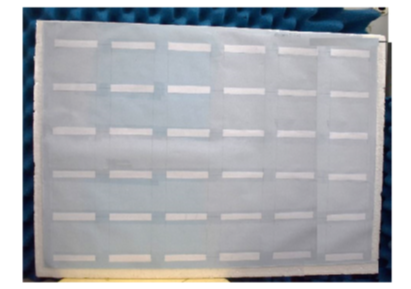


Indian Journal of Science and Technology
Year: 2022, Volume: 15, Issue: 2, Pages: 91-96
Original Article
Vivek Bajpai1, Verandra Kumar2, Kavita Chouhan3, Alok Basita4, Prashant Vasistha5*,Ravindra Kumar6
1Technical Officer, Defence Laboratory Jodhpur, India
2Scientist D, Defence Laboratory Jodhpur, India
3Scientist E, Defence Laboratory Jodhpur, India
4Scientist E, Defence Laboratory Jodhpur, India
5Scientist G, Defence Laboratory Jodhpur, India
6Scientist E, Defence Laboratory Jodhpur, India
*Corresponding Author
Email: [email protected]
Received Date:03 December 2021, Accepted Date:12 December 2021, Published Date:31 January 2022
Background/Objectives: The present research focuses on comparative studies of two different type of chaff fibres for their effectiveness as electronics counter measure. Chaffs are electronic counter measures used in creating false radar signature to deceive tracking radar systems. Many types of chaff payloads are there in use, but the major one is aluminium fibres. These chaffs are designed to cover radar frequency range from 2-18 GHz. However, in future, tracking radars will operate in higher frequency range and will have improved algorithms to mitigate chaff noise of certain Radar Cross Section (RCS) threshold. Methods: The researcher used two different chaff fibres and their corresponding RCS are measured in anechoic chamber for their comparative study. Findings: It is observed that the RCS of the copper coated carbon (CuC) fiber is nearly equal to that of aluminium fiber but due their thinner diameter packing density of chaff fibres within a specified chaff cartridge volume has increased thus resulting in more number of dipole per chaff payload. Larger number of dipoles will help in improving dynamic RCS of chaff payload as it is directly proportional to the number of dipoles. Moreover, the terminal velocity of copper coated carbon fibres is lesser than that of aluminium fibres has improved the persistent time for CuCfiberwhich is a desirable parameter for the effective performance of chaff payload. Novelty: In order to increase dynamic RCS threshold one needs to increase chaff fiber density and chaff cloud suspension time. Both these can be achieved by the development of innovative thin CuCchaff fibres. In this paper, RCS of light weight and thin copper coated carbon chaff fibres were studied in comparison with traditional aluminium fibres and their advantages over aluminium fibres are reported.
Keywords: Backscattered RCS; electrically conducting fiber; anechoic chamber; chaff; Settling Time
© 2022 Bajpai et al. This is an open-access article distributed under the terms of the Creative Commons Attribution License, which permits unrestricted use, distribution, and reproduction in any medium, provided the original author and source are credited.
Published By Indian Society for Education and Environment (iSee)
Subscribe now for latest articles and news.